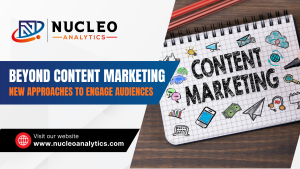User-Generated Content (UGC): Best Strategies and Inspiring Brand Examples
Today, people trust other people more than ads. A photo from a real customer or a short review often convinces faster than a polished commercial.
In this blog, we’ll dig into what works with UGC content, how to encourage it without sounding desperate, and how top brands turn everyday posts into real business results. This blog shows where to start, what to test, and how to run campaigns that feel earned instead of manufactured. If you want social proof that actually drives sales, this is your playbook.
Why User Generated Content Matters Right Now?
We live in an attention economy where trust is scarce. Ads interrupt. Peer posts persuade. The signals that once worked, big production and celebrity spokespeople, still have value, but they don’t build the same credibility as a real customer saying, “This worked for me.”
User Generated content brings clear advantages:
- Believability: Real moments are relatable. They show how your product fits into daily life.
- Scale: One happy customer can spark dozens of posts. With a simple prompt, a single user can become many.
- Cost-efficiency: Encouraging customers to create content leverages existing customers as a UGC marketing channel.
- Discovery: Platform algorithms reward authentic interaction; more UGC often means better organic reach.
It’s not about replacing professional creatives. It’s about mixing authentic customer voices with your owned storytelling. The result: more trust, better reach, and often higher conversions.
Types of user content that actually move the needle
Not all customer posts are created equal. Some formats build awareness fast; others drive purchase intent. Prioritize formats that align with your funnel stage.
Reviews & testimonials
Short, specific reviews answer the key shopper question: “Will this work for me?” Place these near product descriptions and in ads where possible.
Short-form video (reels / TikToks)
A 15–30 second demo, reaction, or “before/after” clip can spark massive interest. These native clips often feel more credible than studio ads.
Photos & before/after shots
User photos add credibility to product claims. Before/After sequences perform especially well in beauty, home, and fitness categories.
How-to clips and tutorials
When customers show hacks or workflows, they give others practical proof. These perform well on YouTube and as evergreen content on product pages.
Unboxing & first-impression posts
These help with early-stage consideration. Prospects see packaging, inserts, and the real first-use experience.
Community content: Events, Meetups, and Collabs
When fans gather, they create flag-bearing content that signals brand affinity and trust.
The best content marketing strategy will include at least three formats: one for discovery, one for consideration, and one for conversion. Subsequently, you can cross-test and scale the most effective ones.
“Want guidance on starting your UGC program? Book a consultation with Nucleo Analytics to discuss actionable steps for your brand.”
The core strategies that turn customers into creators
If you want people to create, make it easy and rewarding. These practical plays work across categories.
1. Make participation frictionless
Give a simple prompt. Use a single hashtag. Share a clear example. Small asks get far more entries than vague ones.
2. Offer meaningful rewards (not just discounts)
Recognition, early access, and exclusives often motivate creators more than one-off freebies. Think “feature on our page,” VIP access, or co-creation opportunities.
3. Launch hashtag campaigns that scale
A catchy hashtag is a rallying point. Advertise it on the receipts, packaging, and emails. Make the rules and the reward clear.
4. Provide templates and micro-briefs
A one-line prompt, a suggested shot list, or an overlay template helps customers produce usable content without feeling awkward.
5. Attribute and credit creators clearly
Tag creators and link to their profiles when you repost. Attribution encourages repeat contributors and signals authenticity to others.
6. Integrate UGC into product flows
Ask for a photo or short clip at the right moment, after a successful setup, a milestone, or a first use, when customers are happiest.
7. Repurpose customer content into ads (with permission)
Test organic posts as paid creative; often, they outperform polished ads because they feel like recommendations, not promotions.
“Want expert eyes on your digital strategy? Nucleo Analytics helps brands plan and optimize campaigns across social media, paid ads, and data tracking. Our team can show you how to turn customer posts into measurable growth.”
How to collect customer-generated content without annoying people
There’s a right and wrong way to ask for content. The wrong way feels transactional and tiresome. The right way is respectful and simple.
- Ask after the value is delivered. Wait until after the product is unboxed or used.
- Show examples. Share a few strong customer posts as inspiration; people copy what they see.
- Keep the ask to a minimum. A single photo or a 10-second clip reduces friction.
- Be transparent about how you’ll use submissions. Tell creators where their post might appear.
- Offer multiple submission paths. DMs, a form on your site, or a hashtag all capture different audiences comfortably.
Keeping the ask short and transparent yields better quality and more willing participants.
Repurposing UGC across organic, owned, and paid channels
When you collect great customer content, use it everywhere:
- Organic channels: Repost with credit and create weekly “fan highlights.”
- Product pages: Add customer photos and quick clips near CTAs.
- Email: Feature real posts in newsletters, and real people get attention in crowded inboxes.
- Paid media: Test studio creative vs. user clips. Often, UGC ads have better CTR and lower CPC.
Use short UGC clips in feeds and slightly longer variants on landing pages. The same content can fuel discovery and conversion when used thoughtfully.
I’ll also note that mixing user visuals with clear context, who the user is, what problem they solved, and what happened next, makes the content work harder.
You should also track which user posts drive the most actions: not all posts are equal. Prioritize the ones that tie directly to customer outcomes (a before/after showing visible results, or a short tutorial that prevents confusion) for paid distribution.
Inspiring brand examples (and what you can copy)
Real examples show what’s possible and what tactics to borrow.
GoPro: Let customers do the heavy lifting
GoPro curates adrenaline-filled clips from users and amplifies them. The product naturally creates shareable moments; GoPro’s role is to spotlight creators. Lesson: When your product sparks obvious shareability, amplify and credit creators loudly.
Glossier: Fans as product storytellers
Glossier’s growth came from user photos and real testimonials. They reposted customer images and used feedback to inform product direction. Lesson: Use customer voice not just in marketing but in product development.
Starbucks: Seasonal UGC done simply
Starbucks’ Red Cup campaigns invite customers to post decorated cups for a chance to win. The mechanics are simple, the reward is recognition, and the result is massive organic reach. Lesson: make participation obvious and fun.
LEGO: Co-creation that drives product roadmaps
LEGO’s Ideas platform lets fans submit builds; the best designs become official sets. That’s customer-generated content influencing product decisions and driving sales. Lesson: give fans a path from idea to impact.
Local & niche wins
Small brands also win: a salon posting before/afters; a bakery featuring customer cake shots; a B2B tool sharing customer walkthroughs that solve a common problem. The core is the same: clear prompts, simple submission flows, and visible credit.
UGC advertising: using customer clips in paid campaigns
Ads that feel like ads lose. Ads that feel like recommendations win. That’s the essence of UGC advertising with social media marketing firms.
Quick playbook for UGC-based ads
- Pick top organic posts (high engagement + a clear message).
- Secure usage rights from creators (simple permission form).
- Edit smartly: short, punchy captions, and front-loaded value.
- A/B test: compare studio creative with user clips for CTR and conversion.
- Scale what works and rotate creators to avoid repetition fatigue.
UGC ads often show better sales lift because they read like peer opinions rather than polished brand messages. Always include a clear CTA and a simple landing experience to minimize friction.
Measurement: what actually matters for UGC programs
Measure like any marketing program, but emphasize attribution and creator health.
Key metrics:
- Engagement rate: (Likes, comments, shares), resonance indicator.
- CTR on UGC ads: Direct comparison to studio ads.
- Conversion lift on product pages with UGC: Split-test pages with and without user visuals.
- Creator retention: Are people submitting again? Repeat creators are gold.
- Earned media mentions: Inbound posts and tags over time.
Run short experiments (2–4 weeks) and look for the combination of engagement and conversion. If creators enjoy the process and the content performs, scale the effort.
Practical 30–60 day road map to launch a UGC program
Week 1: Audit your channels. Collect current customer posts and shortlist top creators.
Week 2: Construct the campaign: choose a hashtag, establish a brief, specify rewards, and design a flow of submissions.
Week 3: Seed the program. Share posts and invite the 10 best customers personally.
Week 4-6: Amplify. The best posts are reposted, small tests are run with paid, and prompts tailored to what works.
Month 2: Create multiple levels of scaler, embed the most popular content on the product pages, and transfer the most successful clips to paid funnels.
Small, fast loops beat grand, slow launches. Test, learn, and scale the content formats and creators that actually move behavior.
Legal & brand-safety checklist
When you use customer content, protect both parties:
- Get explicit permission that covers organic and paid use.
- Use a simple consent form with creator handle, content ID, scope of rights, and duration.
- Screen content for defamatory or unsafe elements before amplification.
- Keep records of payments, rewards, and usage rights for compliance.
Clear, respectful policies keep creators happy and reduce legal risk.
Nucleo Analytics: How we help brands scale UGC
Nucleo Analytics builds UGC programs that are strategic, measurable, and creator-friendly. Here’s what we deliver:
- UGC strategy and briefs: Campaign blueprints, hashtag mechanics, and a creator brief that works.
- Creator outreach & onboarding: To ensure day one submission is of high quality, we identify, screen, and board creators.
- Rights management and legal templates: Basic permissions that allow you to use content safely on both organic and paid platforms.
- Paid creative testing: We transform successful organic posts into advertisements, experiment with, and optimize CTR and CPA.
- Measurement & optimization: Dashboards to monitor engagements, conversion lift, and creator retention, to scale what works.
Conclusion
User generated content is a long-game shift: it’s about building a culture where customers feel heard and rewarded for sharing. Start small, one clear ask, one hashtag, one reward, and watch momentum grow. Use formats that match your funnel: short video for discovery, reviews for consideration, and user photos for conversion. Measure, iterate, and scale the creators and formats that drive both engagement and sales.
“Ready to see what a data-driven campaign could do for your brand? Nucleo Analytics focus on social media marketing, PPC and analytics with the aim of assisting business in transforming customer tales into increased visibility and improved performance.”
FAQs
Q. What is User-Generated Content (UGC) in marketing?
A: User-Generated Content (UGC) is any real customer-created content (text, photo, video or review) rather than brand-created content. It helps to create trust, increase engagement, and enhance conversion rates through demonstrating genuine product experiences.
Q. What is the significance of UGC to brands in 2025?
A: UGC assists companies to gain credibility as it is the opinions of people that are more trusted than advertisements. It enhances organic reach, reduces advertisement expenses, and generates social proof that motivates purchases on social media, online commerce, and paid advertisements.
Q. What do you do to motivate customers to produce UGC?
A: Make participation easy with clear prompts, hashtags, or templates. Offer meaningful rewards like recognition or early access. Use examples to motivate by sharing, and always mention the authors to create loyalty.
Q. Which kinds of UGC drive the most sales?
A: The most popular formats are short-forms, customer reviews, before/after pictures, tutorials, and unboxing videos. Each of the forms can be utilized at various funnel stages to spur discovery, consideration, and conversion.
Q. What are the uses of UGC in advertisement campaigns?
A: UGC advertising involves turning high-performing customer posts into paid ads. Brands, with permission, edit user clips to be short and punchy in message and undergo testing against studio creatives to increase CTR and reduce CPC.
















